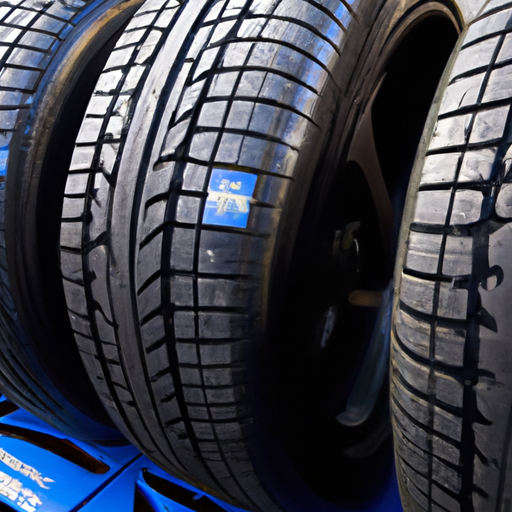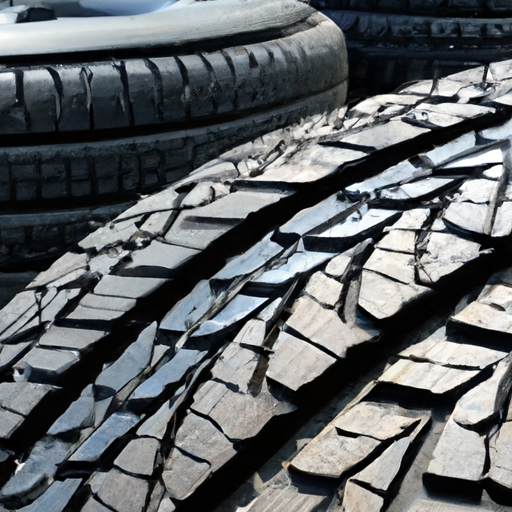You may have heard the term “summer tires” thrown around, especially as the warmer months approach. But what exactly are summer tires? Simply put, they are a type of tire specifically designed to enhance performance and safety in warm weather conditions. From improved grip and handling to increased fuel efficiency, summer tires offer a range of benefits for drivers who want to optimize their driving experience during the summer season. In this article, we’ll take a closer look at summer tires and explore why they are a popular choice among car enthusiasts.
What Are Summer Tires?
Summer tires, also known as performance tires or high-performance tires, are tires specifically designed for use in warm weather conditions. These tires are engineered to provide superior traction and handling on both wet and dry roads during the summer months. In this article, we will explore the definition, characteristics, purpose, tread pattern, material composition, benefits, drawbacks, proper usage, and the comparison of summer tires with all-season tires.
1. Definition
Summer tires are specialized tires that are designed to perform optimally at temperatures above 45 degrees Fahrenheit (7 degrees Celsius). These tires are made from a specific rubber compound and have a tread pattern that is optimized for warm weather conditions. Unlike all-season tires, summer tires are not suitable for use in cold or winter conditions, as they do not provide adequate traction on icy or snowy surfaces.

2. Characteristics
Summer tires are characterized by several key features that set them apart from other types of tires. Firstly, they have a unique rubber compound that is engineered to remain flexible and provide excellent grip on hot pavement. This compound is designed to resist heat buildup, ensuring that the tires maintain their performance even during long drives in scorching summer temperatures. Additionally, summer tires have a more aggressive tread pattern with shallower grooves, which enhances their ability to channel water away from the tire’s contact patch on wet roads.
3. Purpose
The primary purpose of summer tires is to enhance the performance and safety of a vehicle during warm weather conditions. These tires are specifically designed to provide superior handling, responsiveness, and traction on both dry and wet roads. By optimizing the tire’s grip and tread pattern for warmer temperatures, summer tires allow drivers to enjoy a more enjoyable driving experience and improved safety during the summer months.

4. Tread Pattern
The tread pattern of summer tires is carefully designed to maximize their performance characteristics. Unlike all-season tires, summer tires have wider and shallower grooves which help to evacuate water from beneath the tire. This ensures that the tire maintains a greater contact area with the road surface, leading to improved traction and reduced chances of hydroplaning. The tread blocks on summer tires also tend to have a more aggressive pattern, providing better agility and cornering capabilities.
5. Material Composition
The material composition of summer tires plays a crucial role in their performance. Summer tires are made from a unique rubber compound that is designed to remain flexible and provide optimal grip under higher temperatures. This specialized compound contains a higher concentration of synthetic rubbers and fewer natural rubbers, resulting in improved heat resistance and enhanced performance. Additionally, the sidewalls of summer tires are often reinforced with layers of high-strength fabric or steel belts, which enhance the tire’s stability and durability.

6. Benefits
There are several benefits associated with using summer tires. Firstly, these tires offer superior traction and handling on both dry and wet roads, allowing for safer and more enjoyable driving experiences. The optimized tread pattern and rubber compound of summer tires provide excellent grip, responsiveness, and stability, enabling drivers to navigate through corners with confidence. Additionally, summer tires generally have a shorter stopping distance compared to all-season tires, further increasing safety on the road.
Furthermore, summer tires tend to provide better fuel efficiency compared to all-season tires. The specialized rubber compound of summer tires offers lower rolling resistance, meaning that less energy is required for the tire to roll. This results in reduced fuel consumption and, consequently, lower carbon emissions. The improved fuel efficiency and performance of summer tires make them an ideal choice for those looking to optimize both their driving experience and environmental impact.
7. Drawbacks
While summer tires have numerous advantages, it is important to consider their drawbacks as well. One significant drawback is their lack of suitability for cold weather conditions. The rubber compound of summer tires becomes hard and loses flexibility in colder temperatures, reducing grip and increasing braking distances on icy or snowy surfaces. Therefore, it is crucial to switch to winter or all-season tires when the temperature drops below the recommended threshold, to ensure optimal safety and performance.
Additionally, summer tires tend to wear out faster compared to all-season tires. The specialized rubber compound and aggressive tread pattern of summer tires prioritize performance and grip, making them more susceptible to wear and tear. It is important to regularly monitor the tread depth and condition of summer tires to ensure they are not worn beyond safe levels. Regular rotations and maintenance can help prolong the life of summer tires.

8. Proper Usage
To maximize the benefits of summer tires, it is essential to use them properly. Summer tires should be installed on all four wheels for optimal performance and balance. Mixing summer tires with all-season or winter tires can lead to imbalanced handling and reduced traction. Additionally, it is important to check the tire pressure regularly, as under-inflated or over-inflated tires can affect performance, grip, and fuel efficiency.
It is crucial to switch to winter or all-season tires when the temperature drops below the recommended threshold. Summer tires are not designed to provide adequate traction in icy or snowy conditions and can pose a risk to safety. Storing summer tires properly during the winter months is also essential to maintain their performance and longevity. Tires should be stored in a cool and dry place, away from direct sunlight and any chemicals or solvents.
9. Comparison with All-Season Tires
When comparing summer tires with all-season tires, it is important to consider the specific needs and preferences of the driver. Summer tires excel in warm weather conditions, providing superior traction, handling, and performance. They are specifically engineered to optimize grip and responsiveness, making them ideal for those who prioritize a sporty and agile driving experience during the summer months.
On the other hand, all-season tires are designed to provide adequate performance in a wide range of weather conditions, including mild winter conditions. These tires offer a balance between comfort, grip, and longevity, making them a popular choice for those who prefer convenience and versatility throughout the year. While all-season tires may not offer the same level of performance as summer tires in warm weather, they do provide a suitable option for those who do not want to switch tires seasonally.
In conclusion, summer tires are specialized tires designed for use in warm weather conditions. They offer superior performance, traction, and handling on both dry and wet roads, making them an excellent choice for those looking to maximize their driving experience during the summer months. However, it is important to consider their limitations and switch to suitable tires when the temperature drops or when encountering winter conditions. By using summer tires properly and understanding their specific characteristics, drivers can enjoy enhanced safety, performance, and fuel efficiency during the summer season.


